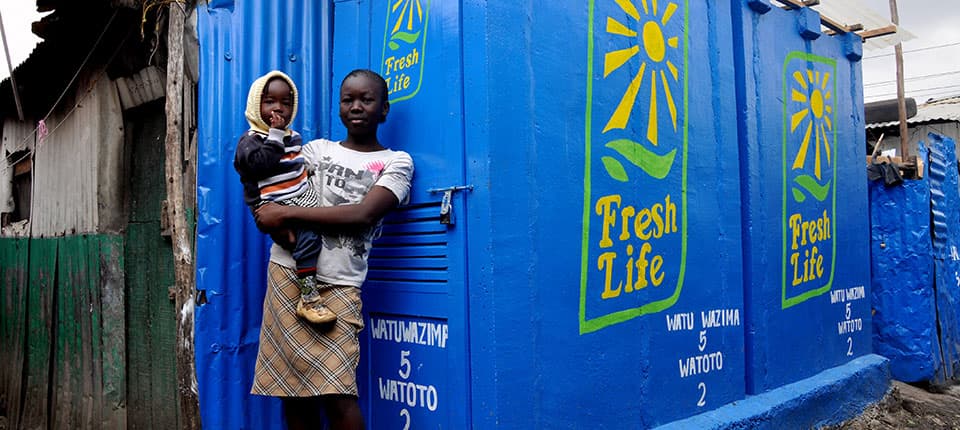Loading News Article...
We're loading the full news article for you. This includes the article content, images, author information, and related articles.
We're loading the full news article for you. This includes the article content, images, author information, and related articles.
Maintaining a clean and fresh bathroom is vital for health and well-being, especially in Kenya where inadequate sanitation infrastructure contributes to widespread preventable diseases.

Nairobi, Kenya – As Kenyans navigate daily life, the importance of household hygiene, particularly in bathrooms, cannot be overstated. Beyond personal comfort, a well-maintained bathroom is a critical barrier against health risks that arise from poor sanitation. This is especially pertinent in Kenya, where a significant portion of the population still grapples with inadequate sanitation facilities and related health burdens.
The Ministry of Health (MoH) has been actively developing policies and strategies to improve sanitation and hygiene across the country. In April 2022, the MoH launched urban sanitation guidelines and menstrual hygiene management documents, aiming to strengthen hygiene practices. The Ministry is also reviewing its rural sanitation protocols to enhance implementation and monitoring frameworks.
Kenya has long faced challenges in providing adequate sanitation for its growing population. The 2019 Kenya Population and Housing Census highlighted persistent struggles in rural areas, with low-quality toilets and open defecation posing significant public health and environmental risks. The government has set ambitious targets, aligned with Kenya Vision 2030 and the Sustainable Development Goals, to achieve universal access to improved sanitation and eliminate open defecation by 2030.
The legal and policy framework for sanitation in Kenya is guided by the Public Health Act Cap 242, the 2010 Constitution, the Water Act 2016, and the Kenya Environmental Sanitation and Hygiene Policy (KESHP) 2016-2030. These documents aim to ensure that urban development plans incorporate sanitation components and that systems are designed and managed safely to protect human health. The national government is responsible for sanitation policy, statistics, and providing technical assistance to county governments.
Community health workers and residents in informal settlements frequently highlight the dire consequences of poor sanitation. Nancy Wangari, a community health worker in Korogocho, Nairobi, noted in 2010 that the lack of water and improper waste disposal posed a significant threat of water-borne diseases like typhoid and cholera. Women and girls in Nairobi's slums, in particular, face heightened risks, including sexual violence, due to inadequate and unsafe communal toilet facilities, as reported by Amnesty International.
Sanitation remains a critical public health concern in Kenya. In 2022, only 31.5% of the Kenyan population used a safely managed sanitation service, with 37.1 million people either openly defecating, using unimproved services, or sharing facilities. Approximately 19,500 Kenyans, including 17,100 children under five, die each year from diarrhoeal diseases, with nearly 90% of these deaths directly attributed to poor water, sanitation, and hygiene (WASH). The economic impact of poor sanitation is substantial, with Kenya losing an estimated US$88 million annually due to open defecation alone.
The lack of proper sanitation facilities and poor hygiene practices contribute to a high prevalence of waterborne diseases such as cholera and typhoid fever. Inadequate sanitation also exacerbates malnutrition and other infectious diseases, particularly among children. The sharing of latrines, a common practice in many areas, has been linked to increased odds of diarrhoeal diseases. Furthermore, poor sanitation disproportionately affects women and girls, impacting their health, dignity, and safety.
While the health impacts of poor sanitation are well-documented, the full extent of the political, social, and economic consequences in Kenya is not yet fully understood, and further research is needed. The effectiveness of various interventions and the sustainability of shared sanitation facilities, particularly in low-income communities, remain areas of ongoing study.
The government's commitment to achieving universal sanitation by 2030, as outlined in Vision 2030 and KESHP, sets a clear timeline. Ongoing reviews of rural sanitation protocols and the implementation of urban sanitation guidelines are crucial next steps.
Observers will be watching for the effective implementation of the Ministry of Health's sanitation guidelines and protocols, particularly in vulnerable urban and rural areas. Progress towards reducing open defecation rates and increasing access to safely managed sanitation services will be key indicators of success. The impact of climate change on water availability and sanitation infrastructure also warrants close monitoring.